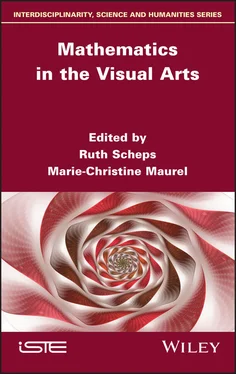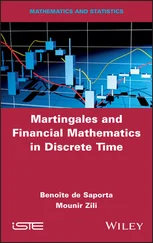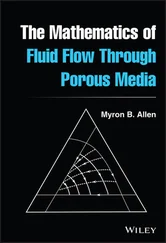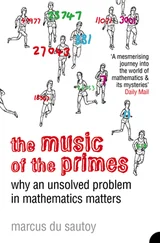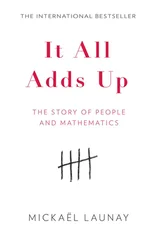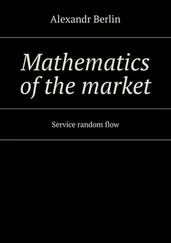Mathematics in the Visual Arts
Здесь есть возможность читать онлайн «Mathematics in the Visual Arts» — ознакомительный отрывок электронной книги совершенно бесплатно, а после прочтения отрывка купить полную версию. В некоторых случаях можно слушать аудио, скачать через торрент в формате fb2 и присутствует краткое содержание. Жанр: unrecognised, на английском языке. Описание произведения, (предисловие) а так же отзывы посетителей доступны на портале библиотеки ЛибКат.
- Название:Mathematics in the Visual Arts
- Автор:
- Жанр:
- Год:неизвестен
- ISBN:нет данных
- Рейтинг книги:4 / 5. Голосов: 1
-
Избранное:Добавить в избранное
- Отзывы:
-
Ваша оценка:
- 80
- 1
- 2
- 3
- 4
- 5
Mathematics in the Visual Arts: краткое содержание, описание и аннотация
Предлагаем к чтению аннотацию, описание, краткое содержание или предисловие (зависит от того, что написал сам автор книги «Mathematics in the Visual Arts»). Если вы не нашли необходимую информацию о книге — напишите в комментариях, мы постараемся отыскать её.
Mathematics in the Visual Arts — читать онлайн ознакомительный отрывок
Ниже представлен текст книги, разбитый по страницам. Система сохранения места последней прочитанной страницы, позволяет с удобством читать онлайн бесплатно книгу «Mathematics in the Visual Arts», без необходимости каждый раз заново искать на чём Вы остановились. Поставьте закладку, и сможете в любой момент перейти на страницу, на которой закончили чтение.
Интервал:
Закладка:
143 138
144 139
145 140
146 141
147 142
148 143
149 144
150 145
151 146
152 147
153 148
154 149
155 150
156 151
157 152
158 153
159 154
160 155
161 156
162 157
163 158
164 159
165 160
166 161
167 162
168 163
169 164
170 165
171 166
172 167
173 168
174 169
175 170
176 171
177 172
178 173
179 174
180 175
181 177
182 178
183 179
Series Editor
Marie-Christine Maurel
Mathematics in the Visual Arts
Edited by
Ruth Scheps
Marie-Christine Maurel

First published 2020 in Great Britain and the United States by ISTE Ltd and John Wiley & Sons, Inc.
Apart from any fair dealing for the purposes of research or private study, or criticism or review, as permitted under the Copyright, Designs and Patents Act 1988, this publication may only be reproduced, stored or transmitted, in any form or by any means, with the prior permission in writing of the publishers, or in the case of reprographic reproduction in accordance with the terms and licenses issued by the CLA. Enquiries concerning reproduction outside these terms should be sent to the publishers at the undermentioned address:
ISTE Ltd
27-37 St George’s Road
London SW19 4EU
UK
www.iste.co.uk
John Wiley & Sons, Inc.
111 River Street
Hoboken, NJ 07030
USA
www.wiley.com
© ISTE Ltd 2020
The rights of Ruth Scheps and Marie-Christine Maurel to be identified as the authors of this work have been asserted by them in accordance with the Copyright, Designs and Patents Act 1988.
Library of Congress Control Number: 2020942150
British Library Cataloguing-in-Publication Data
A CIP record for this book is available from the British Library
ISBN 978-1-78630-681-4
Introduction
The presence of mathematics in the arts has been plain since at least Pythagoras’ time. This applies as much to music (rhythm, scales and chords) as to all the visual arts, which are addressed in this book. The visual arts are also related – more and more closely – to other sciences (material, life and cultural). However, in order to get to the very roots of the connections between art and science, we felt it appropriate to choose “the queen of sciences”.
Within the mathematical sciences themselves, geometry, born from the vision of space (geometry: “measuring the Earth”), is, in this respect, the first. In the words of Max Bill: “The primary element of any plastic work is geometry, in terms of relationships between positions in the plane or the space” 1 . Confronted with the forms they saw in nature, the early geometrists tried to understand them by drawing them in an idealized way, that is, by modeling them. In the artists’ hands, these basic forms became the means of expression with universal scope.
Before characterizing this unquestionable presence of mathematics in the works of art in more detail, we should first note that mathematics, by its very nature, has a tendency towards plastic representations: mathematical objects , created for the purpose of translating scientific abstractions into visual terms.
Visual artists of modernity have often taken their inspiration from mathematical models , as if to delegate to them the task of speaking the unspeakable of art. Think of M.C. Escher, who exploited the riches of tiles from the hyperbolic plane, or Salvador Dali, who represented the crucified Jesus on a hypercube 2 , or the constructivist sculptors Henry Moore, Naum Gabo and Barbara Hepworth.
A certain parallelism between mathematical and artistic approaches has often been argued – and equally often rebutted. Let us therefore say at the outset what, in our view, should be excluded, and that is the quest for beauty for its own sake. If mathematics happens to be “beautiful”, this is actually a consequence of its elegance, in other words, its simplicity. As for art, it renounced beauty as a determining criterion long ago.
What seems of greater interest in this respect is the search for truth. This is, without question, the ambition of mathematics, which is wholly intellectual in nature and based on axioms that are posited as true or on accepted assumptions. This ambition is more intuitive in art: in a picture, truth is not expressed in a “thinking way”; it can be simultaneously striking and inaccessible.
The best established point of convergence between the artistic and mathematical approaches (as with other sciences) is that they turn the subject, whatever it may be, into a heuristic form; that is, they make it thoughtprovoking. Moving away from a materialistic concept of painting, can mathematics help us to discover the “spiritual software” of a work of art?
Let us turn to the contemporary aspects of the “marriage” between mathematics and the visual arts.
Since the emergence of non-Euclidean geometries and new branches of physics (quantum and relativistic) that point to the importance of chance, or even uncertainty, in the material world, we have seen a gradual erasure of the boundaries between the logical understanding of phenomena and the intuitive approach. Max Bill’s Mathematical Art represents a culmination of this convergence.
In the wake of conceptual art, digital art has driven the dematerialization of artwork still further. Now that a painting is nothing but a signal, devoid of any meaning of its own, the work’s significance has shifted upstream, in other words, to its production processes, the algorithms or the thought processes that generated it.
But there is more: having gradually freed itself from the material (in favor of light, or other forms of energy or information and communication), the work of art tends nowadays to emancipate itself from its creator, with their assent, and win its autonomy. Randomness thus plays a role, not only in the decision-making processes of the artist, but within the work itself. Art appears to have accepted its own artificialization. It remains to be seen whether this will lead to its disappearance as a human construct, or to its reconfiguration as total artificial art.
Taking note of the fact that geometry, in all its forms, is the mathematical discipline that has contributed most to the visual arts, this book sets out to show the fruitfulness of their relationships throughout all eras.
Giuseppe Longo and Sara Longo, in their article “Infinity of God and Space of Men in Painting”, evoke the contribution of the geometric perspective to Renaissance painting. From the mid-14th Century, armed with this new tool, artist-theologians were able to organize the space of men and symbolize their finitude, in the face of God’s infinite act.
Another contribution of geometry to painting is highlighted by Jean-Pierre Crettez in his two articles on “internal geometry” – a concept created by the author to show how classical painters such as Leonardo da Vinci and Georges de La Tour used geometry (invisible but revealed through its structural mesh) to ensure the coherence and harmony of their pictorial space.
Since the early 20th Century, geometry has had a plurality of forms: non-Euclidean geometry, catastrophe theory, algorithmic geometry, fractal theory, etc. In her article “Geometry and the Life of Forms”, Ruth Scheps explains how these various geometric currents have inspired geometric abstract artists – from suprematism to digital art, via optical art, kinetic art, conceptual art and minimalism.
Читать дальшеИнтервал:
Закладка:
Похожие книги на «Mathematics in the Visual Arts»
Представляем Вашему вниманию похожие книги на «Mathematics in the Visual Arts» списком для выбора. Мы отобрали схожую по названию и смыслу литературу в надежде предоставить читателям больше вариантов отыскать новые, интересные, ещё непрочитанные произведения.
Обсуждение, отзывы о книге «Mathematics in the Visual Arts» и просто собственные мнения читателей. Оставьте ваши комментарии, напишите, что Вы думаете о произведении, его смысле или главных героях. Укажите что конкретно понравилось, а что нет, и почему Вы так считаете.
